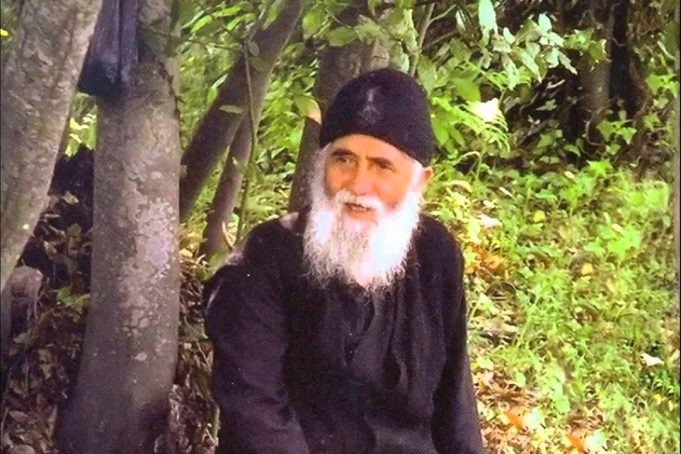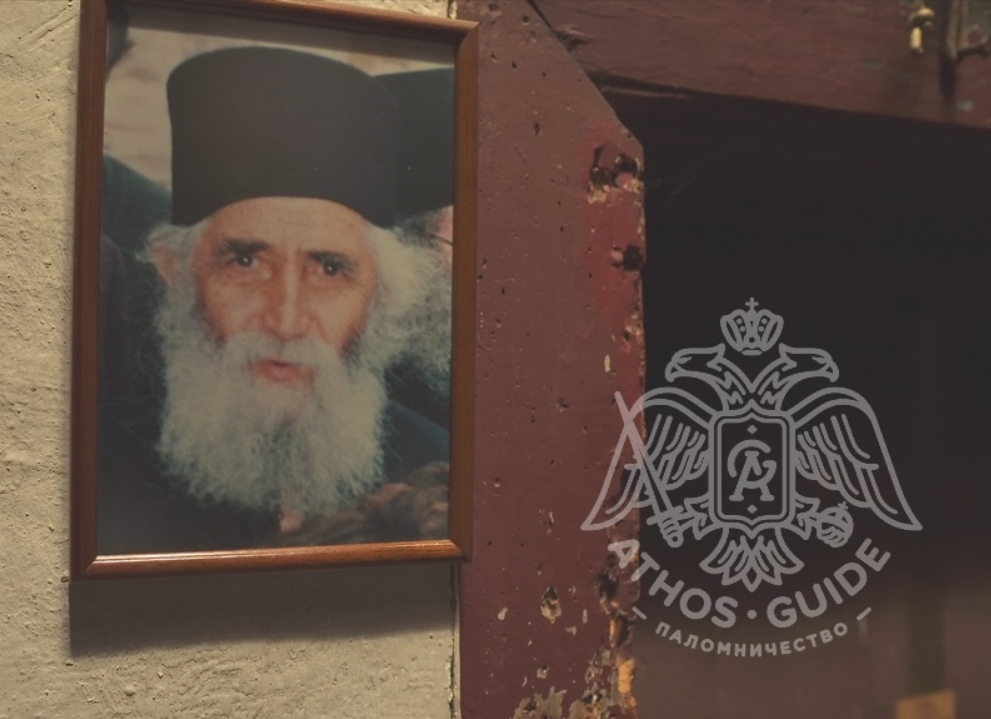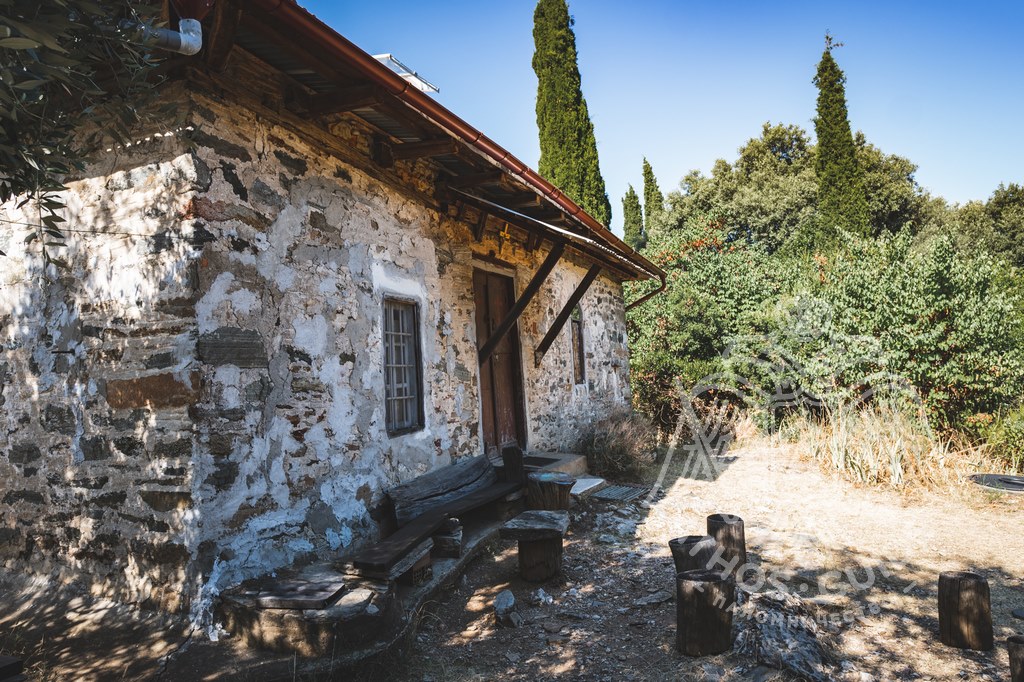
Saint Paisios the Athonite
Saint Paisios (known also with his secular name as Arsenios Eznepidis) was born in Farasa, Cappadocia, in eastern Asia Minor, on July 25, 1924. He was the eighth child out of ten in the family of Prodromos and Eulabia Eznepidis. In the village of Farasa, its inhabitants were distinguished for their heroism and loyalty. They sticked to the tradition and they respected the asceticism of the older Cappadocians. The village's chaplain was Saint Arsenios the Cappadocian - a religious ascetic - who did great miracles on Christians and Muslims. The pious parents of Saint Paisios wanted to give him the name Christos, in honor of his grandfather, but Saint Arsenios refused, foreseeing that this child was chosen by God to take his own name and replace him in monasticism. So it was.
With the exchange of populations due to the war in Asia Minor, the Eznepidis family, Saint Arsenios and all people from Farasa found themselves refugees. They first went to Piraeus and from there to Corfu (where Saint Arsenios was buried). Afterwards they went to Igoumenitsa and finally to Konitsa. In Konitsa, little Arsenios finished the primary school and learned the carpenter's trade.
He is distinguished for his passion in his spiritual life and his desire to imitate the ascetics. He admired them and he used to read their hagiographies, while he also used to study the texts of the Gospel.
After the army - where he served as a radio operator during the difficult years of the civil war - he was discharged in 1949. He came to Mount Athos with the intention of becoming a monk in the year 1950. He started his monastic life at the Esfigmenos Monastery, on March 27, 1954, where he took his first name, Averkios. His passion for God and his obedience to his elder revealed him as a great monastic figure right from the start. His humility was evident as he considered himself inferior to all other monks. He especially loved and studied the texts of Abba Isaac the Syrian.
From Esfigmenou Monasery he went to the Philotheou Monastery and on March 3, 1957 he received the "Small Schema". It was then that he took the name "Paisios", in honor of the Metropolitan Paisios II of Caesarea.
In 1958 he goes to the Holy Monastery of the Nativity of the Virgin Mary in Stomio of Konitsa. For four years he took care of the renovation of the monastery and strengthened the faith of the inhabitants, many of whom had changed their faith to the Evangelical heresy. At the same time, he helped the neglected and poor people with his actions and with his beloving words. He was admired by the faithful but he was also hated by the envy of others. Wishing to retire to the peace and quiet of the ascetic life, he fled to Mount Sinai in 1962 , where he remained for two years in the cell of Saints Galaction and Episteme. There he experienced a higher state of asceticism since he was able to devote himself to prayer without any distraction. He also helped the Bedouins of the place by offering to them the small crosses he used to make at his handiwork. Soon he became a very loved personality.
He returned to Mount Athos in 1964 to the Skete of Saint John the Forerunner of the Iviron Monastery. At first, he kept close to him some young people who intended to become monks, but after two years, in 1966, due to health problems, he had to transfer to Thessaloniki for a lung operation. During this period, he met in the hospital some young girls. They longed for monasticism and so he helped and prepared them spiritually. At that, there was founded the retreat of Saint John the Theologian in Souroti of Thessaloniki. The old man was associated with this monastery until the end of his life.
Returning to Mount Athos, he settled in Katounakia where he continued his spiritual struggle. He was blessed with light and divine grace. After a year (1969) he helped to transform the Stavronikita Monastery into a community. He supported the young brothers and helped them spiritually. During his stay, he spent a week with his elder Tychon. Just before he fell asleep, Father Tychon expressed his desire to keep Saint Paisios in his cell: "If you stay in this cell, I shall have joy. But it should be done as God wants, my son." Indeed, Saint Paisios stayed there for the next ten years. Saint Arsenios visited him there and left him "an inexplicable sweetness and heavenly joy in his heart". There he was also visited by Saint Euphemia, whose martyrdom he was honored to 'see'. However, the most important is that in this cell he saw our Lord! He wrote: "It would be worthwhile to do, if one could, all the struggles that all the ascetics from the first century to the twentieth have ever done, in order to see our Christ, not for an eternity in Paradise, but even for one single minute." The Elder had always longed to live in the obscurity and silence of the desert. However, the grace of the Lord had other plans for him.
The number of people who visited him was constantly increasing. Pilgrims with all kinds of problems sought spiritual consolation from the old man. He used to say to himself "my heart longs to be broken into pieces and to be distributed to all people" – that’s the amount of compassion he had for the world.
The cell of "Panagouda" (deriving from “Panagia” which refers to the Mother of God) will be the place where the old man will spend the last fourteen years of his life. There he received from God the "divine order" to devote himself to the people of the Church. He was full of spiritual gifts. He offered his love to every aching person who approached him. When he was in the monastery of Souroti he used to see, on Sundays after the Divine Liturgy, all women who couldn’t visit him on Mount Athos. When he was speaking, they were all feeling that "what he said was meant for me". In the evenings he used to pray.
He wrote: “There are people with serious problems who are in real need. Too many people and too much pain, but Jesus Christ and the Virgin Mary, together with all the Saints keep me on my feet. I must always be able to help. I can't give up, I have to make it."
In the last year of his life his health deteriorated. For this reason, he remained in the monastery of Saint John the Theologian in Souroti from November 1993 until his death on the 12th of July 1994. As he said, "the pain of my illness has been to me more beneficial than all the ascetic struggles I did in my whole life". He asked that he would be buried in a simple way by the monastery's chaplain and only in the presence of the brotherhood, in the Chapel of the Archangels in the Retreat of Souroti. He also asked that his remains will never be exhumed. The burial took place behind the Sanctuary of the Church of Saint Arsenios where his tomb is located until today. On it there is a small marble inscription with his words engraved on it: "Here my life and my breath ends, here my body will be buried, here my soul will rejoice. My Saint dwells, this is my honor. I believe He will show mercy for my poor soul. He will wish the Lord that I may have the Virgin Mary with me. Monk Paisios the Athonite".
After his burial, people have come from all over the world to venerate his graceful tomb as his fame and miracles were spread all over the Christianity.
On the 13th of January 2015, the Holy Synod of the Ecumenical Patriarchate of Constantinople decided to announce the elder Paisios as a Saint of Mount Athos. In that way he was added to the Holy Calendar of the Orthodox Church.
May his grace and his blessings be with all of us!
Light a candle
You can light a candle in the monasteries of St. Athos
Submit a note
Submit a memorial note to the monasteries of Athos
Mount Athos Shop
Handmade products by the monks of Holy Mount Athos
Transportation on Mount Athos
Book a vehicle for travelling on Holy Mountain
Diamonitirion
Obtain a visa to the Holy Mountain. Guarantee of issuance
Athos cruise
A tour along the west coast of the Holy Mountain on a cruise ship
Submit tamas
We will deliver your tamas to the icon of your choice

